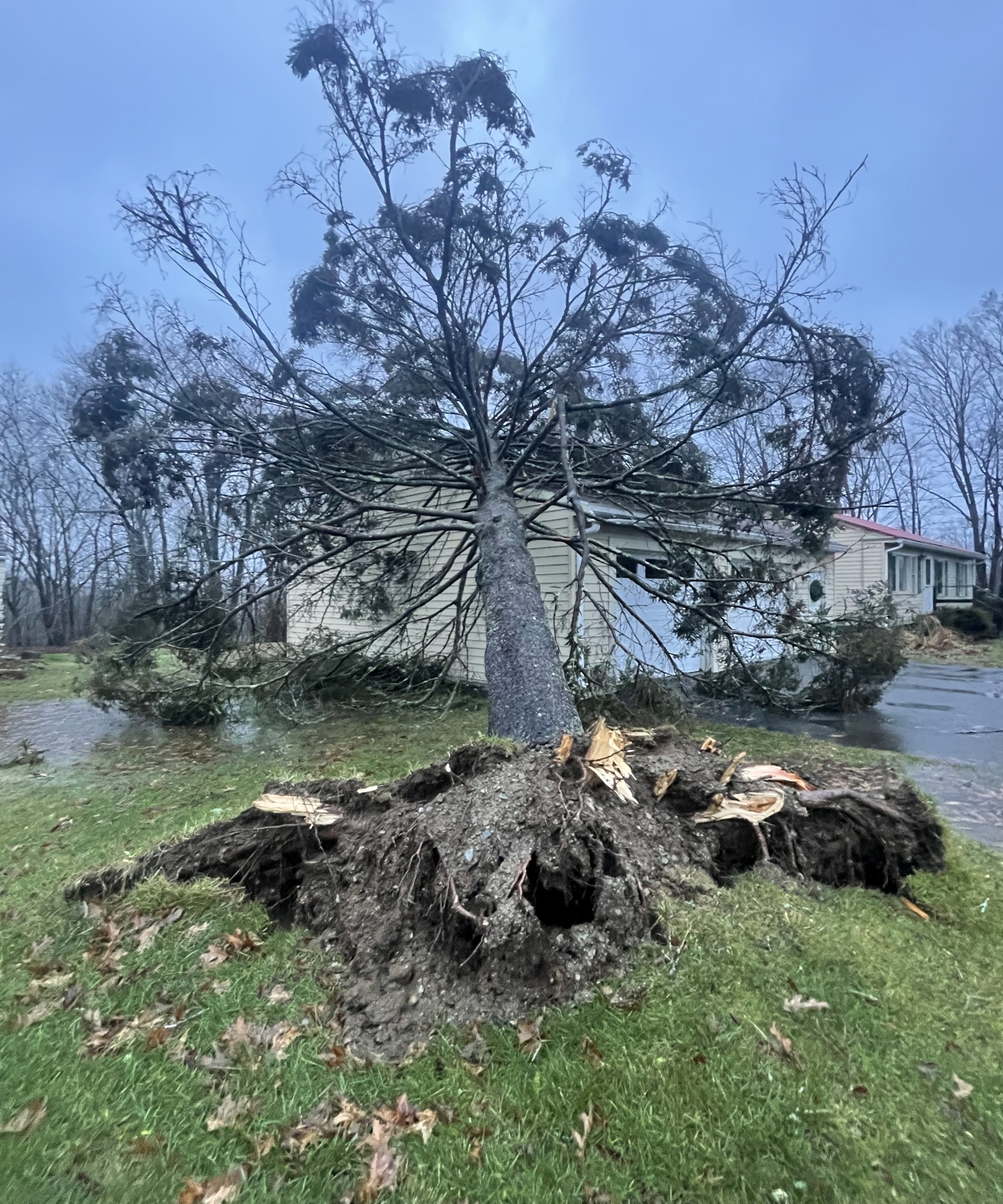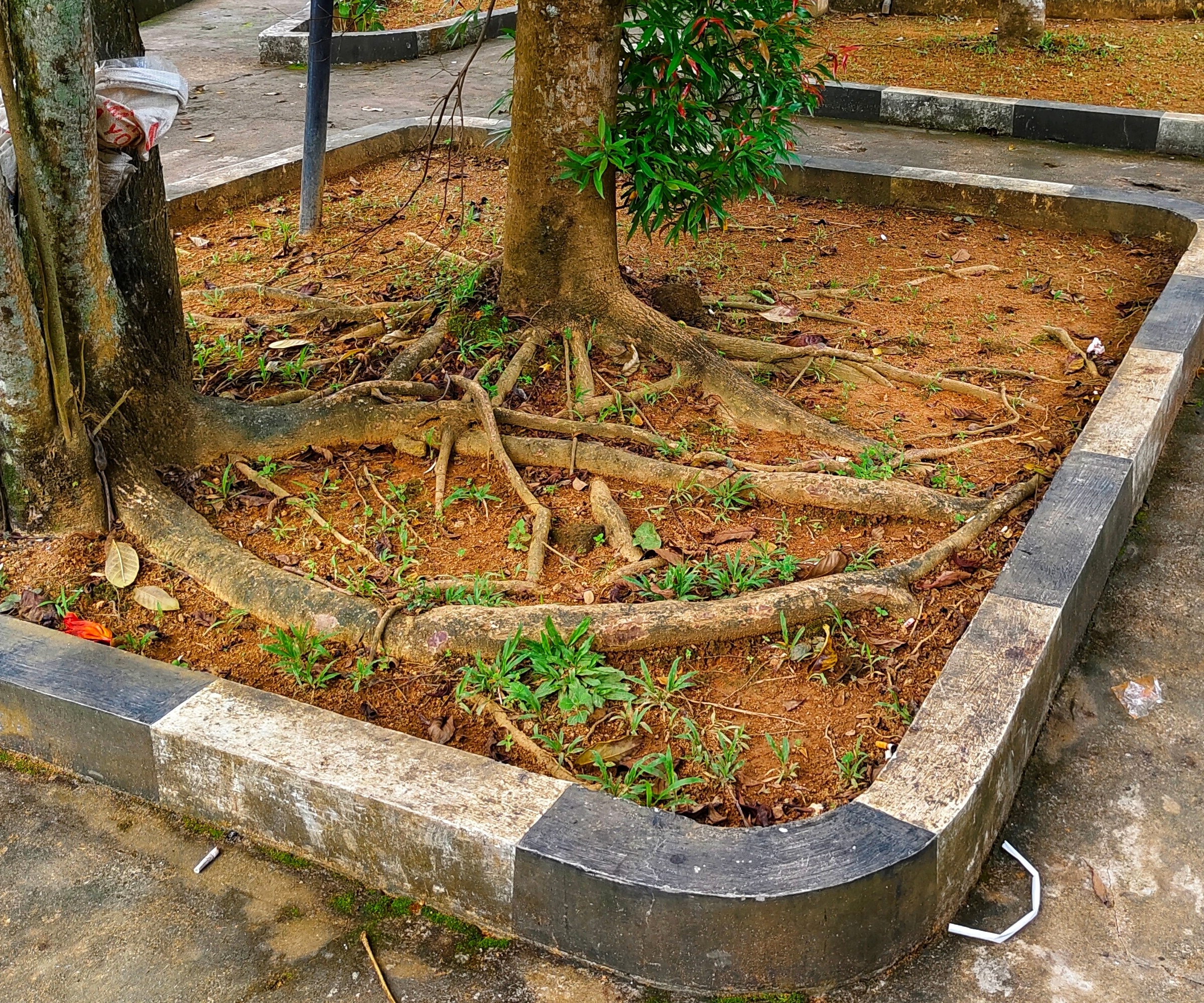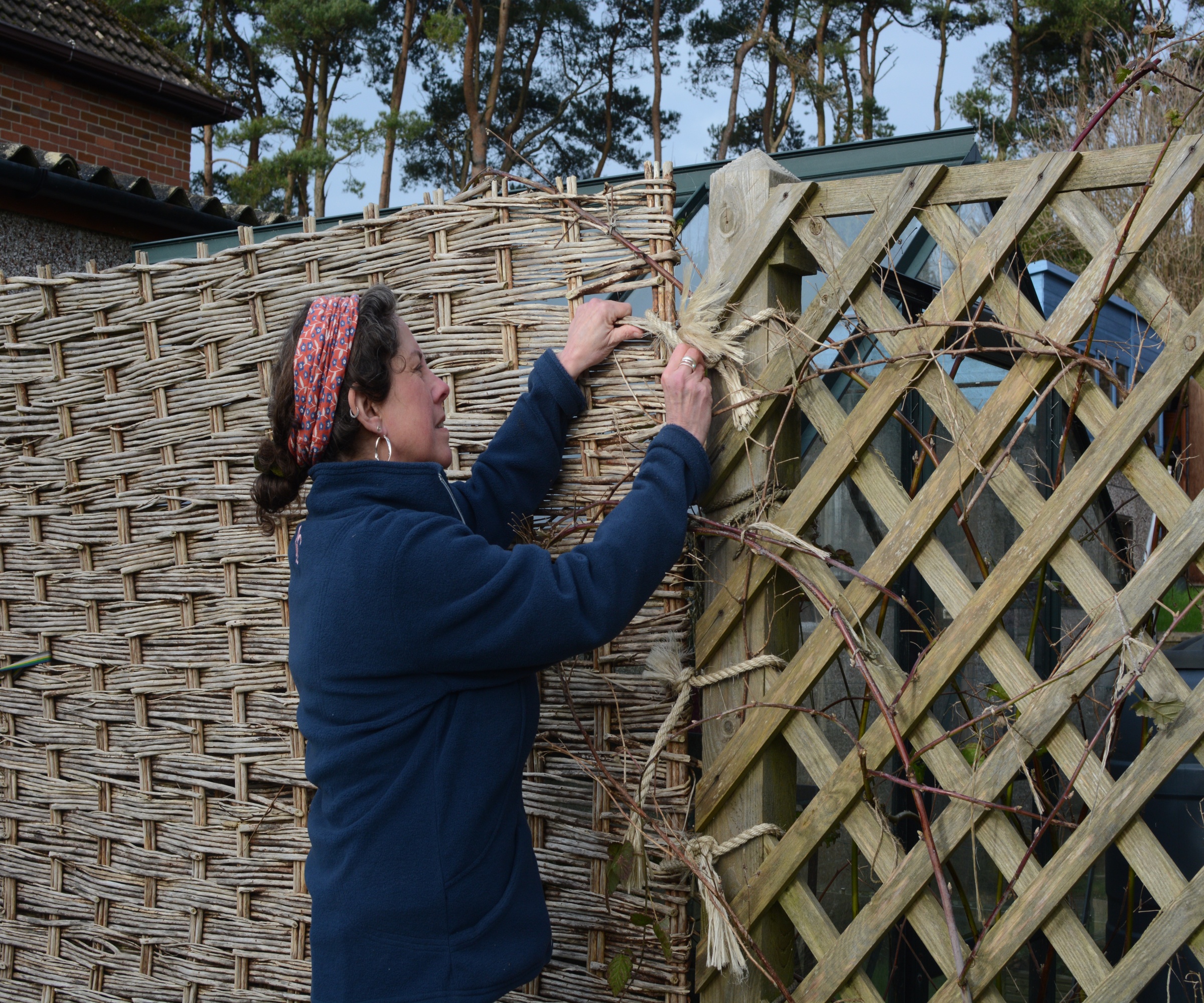What is wind rock – and how to prevent it causing damage to your plants, yard and property
How to protect your plants from devastation caused by high winds in the fall and winter


Wind rock is the term we use to describe how the actions of extreme high wind and gales can damage and destabilise plants.
It is usually associated with fall and winter seasons, but can happen at any time of year, so it always pays to prepare your yard against storms before bad weather hits. Plants that are most vulnerable to wind rock are newly planted trees and shrubs that have yet to root down and get established. There are also some shallow-rooting varieties whose roots tend to remain close to the surface of the soil.
In the past I have gardened on exposed coasts, and now I live on a hill where the yard is blasted by the prevailing wind. My years of experience have taught me the best ways of preventing wind rock and keeping plants safely anchored in the soil.
What is wind rock?

High winds are a destructive force and can destabilise even large plants
Wind rock is exactly what is describes - plants being physically battered about and rocked by the force of strong winds.
Whereas herbaceous perennials and annuals can bend and move with the wind, less flexible woody plants are more vulnerable to being dislodged from the soil by the strongest gusts.
At best, wind rock can disrupt growth, damage plants and halt healthy development. At worst it can completely uproot trees and shrubs, causing extensive damage to your yard and property, injury and even death.
It can affect all plants but the ones at most risk are recently planted trees and shrubs, plants growing in an exposed position and plants with shallow roots that don’t have the depth to grip the soil properly.
How does wind rock affect plants?

Wind rock can blow soil from the roots of plants, a problem made worse by drought and also heavy rain
Plants that are regularly battered by powerful gusts of winds may fail to thrive because the constant shaking of the top growth disturbs their roots, weakening their hold on the soil and disrupting their uptake of water and food.
This can be made worse by drought and the drying effects of wind, which desiccates the soil and blows it away from the roots leaving them exposed to the elements.
Strong winds can also cause leaves to dry out and shrivel, and it can damage and dislodge flower buds.
Constant buffeting by prevailing winds can also change the way trees and shrubs grow, molding their branches so they all point away from the wind.
How to prevent wind rock

Permeable windbreaks such as willow and hazel hurdles can diffuse gales and prevent wind rock
To avoid losing plants to wind rock, grow the most vulnerable varieties in sheltered areas of your yard.
If your garden is on a hill, plants in the middle of the slope will be better protected than those at the top or the bottom. Give new trees and shrubs the best start by avoiding the most common planting mistakes, and make sure they are deeply watered to help their roots get established. Don't let them dry out after planting.
Work with the direction that the prevailing wind hits your yard. For example, our garden bears the brunt of the south westerly wind, so we know that anything growing in its path needs to be protected.
You can lessen the force of the wind by planting permeable windbreaks around vulnerable plants.
These could be willow or hazel hurdles, like this Master Garden willow fence screen on Amazon, tall ornamental grasses or bamboo - anything that diffuses the wind and helps to reduce its impact.
Avoid solid barriers that merely move the wind elsewhere, where it may cause even greater damage. Strong supports are also essential, especially with newly planted trees and shrubs.
If you are growing climbing plants such as sweet peas or beans, creating a natural-looking hazel support for them to scramble up looks attractive and will be stronger and offer better protection than a line of canes.
Climbers, trees and shrubs should also be pruned regularly in the fall, because long whippy growth and lots of branches gives the wind something to ‘hang on to’ and tug at your plant with. Follow the simple one-third pruning rule to keep them healthy and in good shape.
Plants that are most susceptible to wind rock

Because their roots grow close to the surface, roses are one of the plants most vulnerable to wind rock
Roses: Roses are shallow-rooted so need extra protection during the winter months.
To protect them from wind rock, avoid the most common rose growing mistakes, and make sure they are regularly pruned. It is a traditional job to shorten the stems of tall bush and shrub roses by a third to a half in the fall to reduce wind rock during winter gales.
Prune stems to an outward facing bud and tread the soil firmly down around their roots to keep them well supported.
Buddleia: Buddleia, or butterfly bush, is a fast-grower and can quickly develop a top-heavy mass of tangled branches in just one growing season.
Cut back buddleia at the right time, thinning the most congested branches to improve airflow and stop the wind catching and causing destabilisation.
In early spring, you can also ‘stool’, or hard prune buddleias down to just a few inches of growth. They will quickly recover and if done every few years, it keeps plants shapely, easier to manage, and encourages them to produce more flowers.
Dogwood: Dogwood is loved for spring flowers and the vibrant winter color of their stems. But this tight-growing framework can make them vulnerable to wind rock.
Although they don't need much pruning, a light trim as part of their fall maintenance will help prevent stem congestion.
Lavatera: Lavatera, or tree mallow, need to have their longest stems trimmed back in the fall to keep them safe from wind rock.
This is especially important if they are growing in coastal gardens that are more exposed to high winds.
You can then cut them back hard in spring to make way for lots of fresh growth and plenty of flowers.
Abutilon: If left to their own devices, abutilons will grow to over 12ft tall, and produce all their flowers out of sight at the top of their branches so regular fall pruning keeps them safe from wind rock and also ensures they will flower where you can see them.
Container-grown abutilons should also be pruned to stop them toppling over in high winds, and they should also be moved to a sheltered spot in the fall if possible.
FAQs
How can I protect small plants from wind rock?
The easiest way is to cover them with a cloche or surround them with a barrier of garden fleece and canes deeply inserted into the soil.
If you are using cloches, especially ones made out of plastic like these Nutroeno reusable cloches on Amazon, make sure they are securely anchored so they don’t blow around the garden causing damage in high winds.
What is the best position for a windbreak in a yard?
Windbreaks should usually be placed so they face the prevailing wind, giving the most protection. However, in very exposed yards they can also be placed to protect plants from the cold and ferocity of easterly and northerly winds.
They should be wider than the plants they are protecting and curve slightly around them, or have a short ‘arm’ on either side, to cocoon the plants.
How should I support a new tree in high winds?
In my experience, the simplest and most effective way of supporting a newly planted tree is by using a heavy duty stake and ties, like this steel tree staking and support kit at Amazon.
Position the stake at the side of the tree that is hit by the prevailing wind and hammer it firmly into the soil. Then place one tie around the tree trunk near to its base and the second around two thirds of the way up. Make a figure-of-eight with each tie and fasten it around the stake, so one loop of the '8' is around the tree, the other around the stake. This helps cushion the bark of the tree from being damaged by banging against the stake.
Make sure the tree is held secure but can also move slightly in the wind. Check the ties every few months to make sure they are still supporting the tree and not causing chafing.
With climate change creating greater extremes of weather it is never too soon to protect your yard and plants from the devastating effect of gale force winds, whether that is by changing the trees and plants you grow or modifying your garden design ideas for better climate resilience.
Watch weather forecasts and put protective measures in place before storms arrive, so you can stay safe indoors until the worst of the weather is over.
Sign up to the Homes & Gardens newsletter
Design expertise in your inbox – from inspiring decorating ideas and beautiful celebrity homes to practical gardening advice and shopping round-ups.

Ruth is a Contributing Editor for Homes & Gardens, and formerly Gardening Editor of Amateur Gardening magazine. She is horticulturally trained, with a qualification from the Royal Horticultural Society. Her work for Amateur Gardening, the world's oldest weekly gardening publication, involved matching gardening tasks with each season, covering everything from sowing and planting, to pruning, taking cuttings, dealing with pests and diseases and keeping houseplants healthy. She is an expert in ornamental plants and edible crops, and everything she writes about and photographs is in her own garden, that has been a work in progress since her family moved there in 2012.
-
 How to grow Virginia creeper – it may divide opinion, but this fast-growing, shade-tolerant vine will cover walls and fences in record time
How to grow Virginia creeper – it may divide opinion, but this fast-growing, shade-tolerant vine will cover walls and fences in record timeIf you are looking for spectacular fall color, Virginia creeper is the climbing plant to grow
By Thomas Rutter
-
 Step up your pool cleaning routine with Beatbot AquaSense 2 Ultra
Step up your pool cleaning routine with Beatbot AquaSense 2 UltraCelebrate National Pool Opening Day by saving up to $618 on a luxurious pool cleaning solution from Beatbot.
By Sponsored